Side Plank
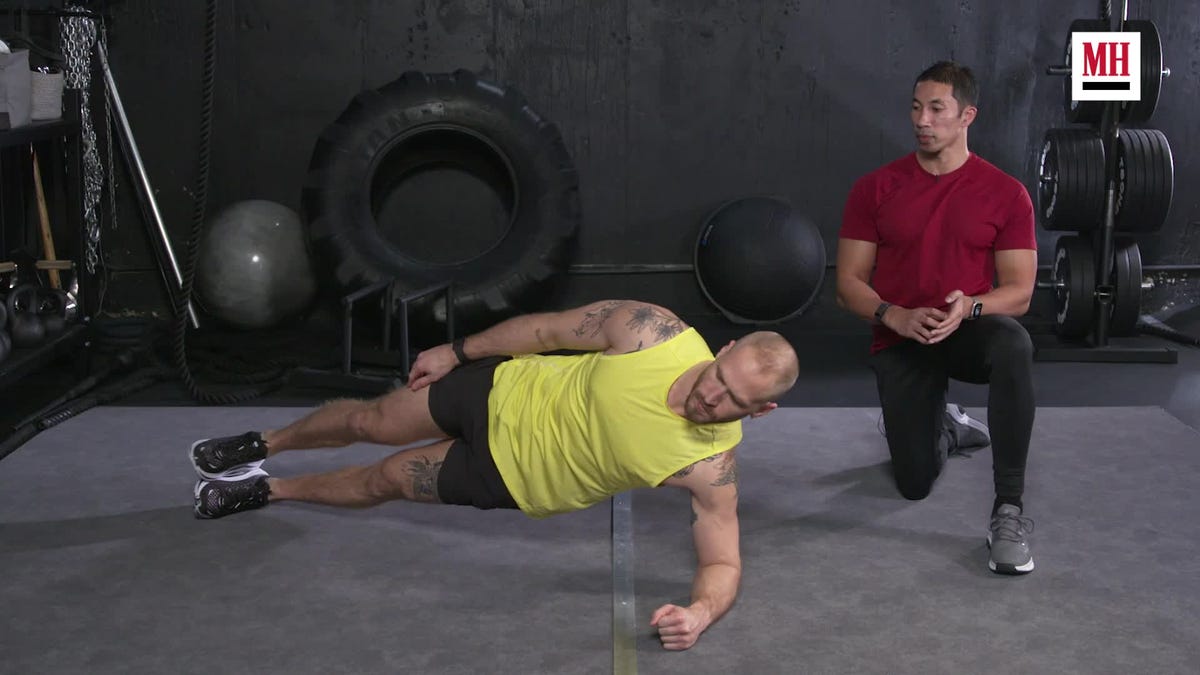
Why: This is one of the most popular exercises to train your obliques, and for good reason. The plank is a simple, accessible movement, and flipping to the side gives you a potent bracing and stabilization challenge.
How to Do It:
Lie on one side with your legs straight and prop up your upper body on your forearm. Raise your hips so your body forms a straight line from your head to your heels.Brace your abs and squeeze your glutes to hold the position.If you want to make it harder elevate your feet or add a torso rotation.
Sets and reps: 2 to 3 sets of 40 second holds per side
Copenhagen Side Plank
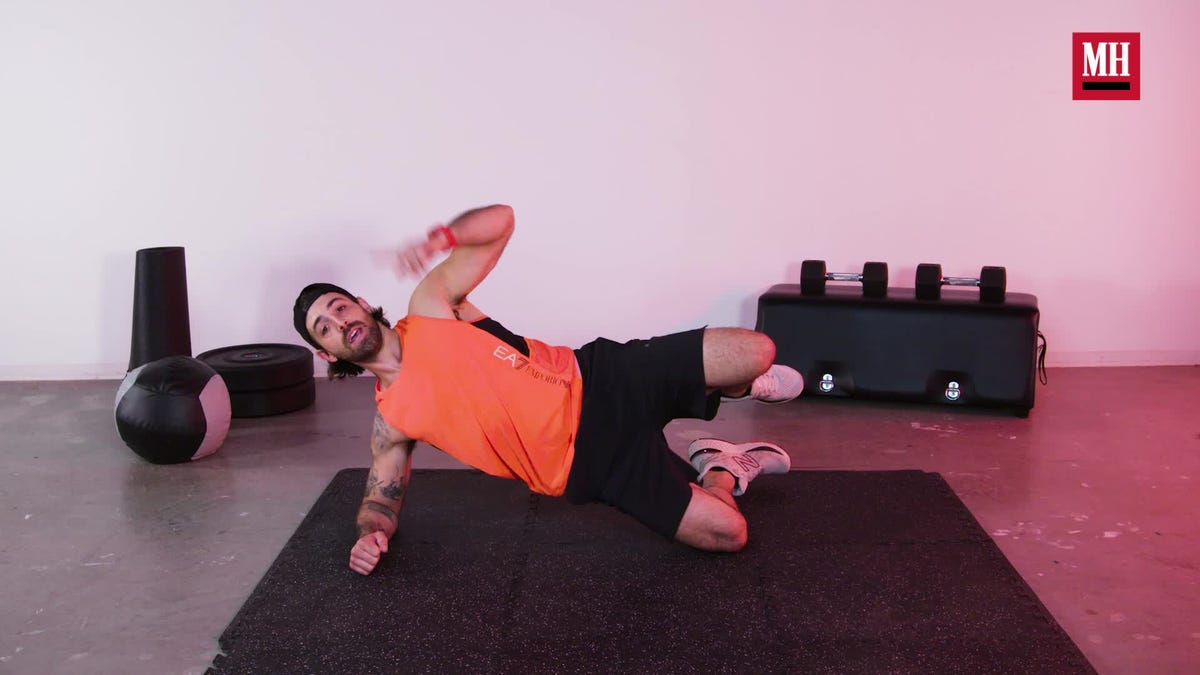
Why: This slightly-tougher side plank puts even more onus on the obliques.
How to Do It:
Get down on the floor on your side, placing one elbow on the floor stacked directly beneath your shoulder. Extend your legs out, then rest your weight on the top foot and brace your core to elevate your body off the floor, resting on your elbow and foot. Drive your bottom knee up, as if you were raising it up to run. Hold this position, maintaining tension to keep your spine straight and your torso from falling forward, then return to the floor.
Sets and reps: 2 to 3 sets of 10 to 20 second holds per side
Star Plank

Why: Add abduction to the equation with this variation of the side plank.
How to Do It:
Start in the side plank position on your side with your elbow on the floor stacked below your shoulder. Bend your knees together on the floor. Push your elbow and bottom knee into the floor and press upward, raising your top arm and leg up in the air in the shape of a star. Hold this position for a count, then return to the start.
Sets and reps: 2 to 3 sets of 10 to 20 second holds per side
Advertisement – Continue Reading Below
Plank Rotation

Why: Add an rotational element here, giving your obliques a challenge and introducing spinal mobility into the equation,
How to Do It:
Get into a high plank/pushup position, with your hands on the ground directly beneath your shoulders, your feet on the floor in line with your hands, squeezing your glutes and abs to create fully body tension and keep your back level. Push one hand into the ground, then lift the other off the floor, rotating your torso to reach up to the sky. Keep your eyes locked onto that hand as you raise up. Pause for a count, then rotate back to the starting position
Sets and reps: 2 to 3 sets of 10 to 20 second holds per side
Copenhagen Plank
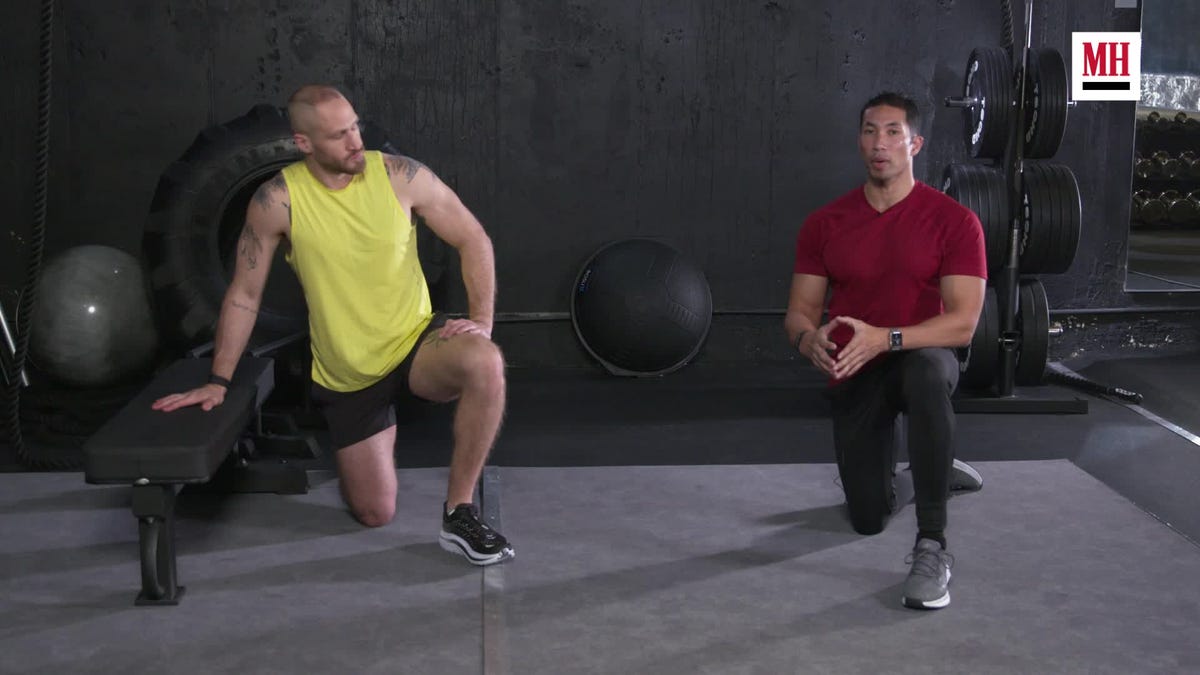
Why: You’ll need a weight bench (or some other sturdy platform of similar height) for this plank variation, which challenges you to elevate your body above the ground for a tougher stabilization.
How to Do It:
Get into a side plank position, with your outside foot up on the bench. Squeeze your upper abs, hips, and obliques to keep your hips up and your spine straight. For the standard variation, keep the leg closer to the ground off the floor. If you want an additional challenge, you can give the version of the Copenhagen plank add the knee drives with the lower leg.
Sets and reps: 3 sets of 10 to 20 second reps
Suitcase Carry
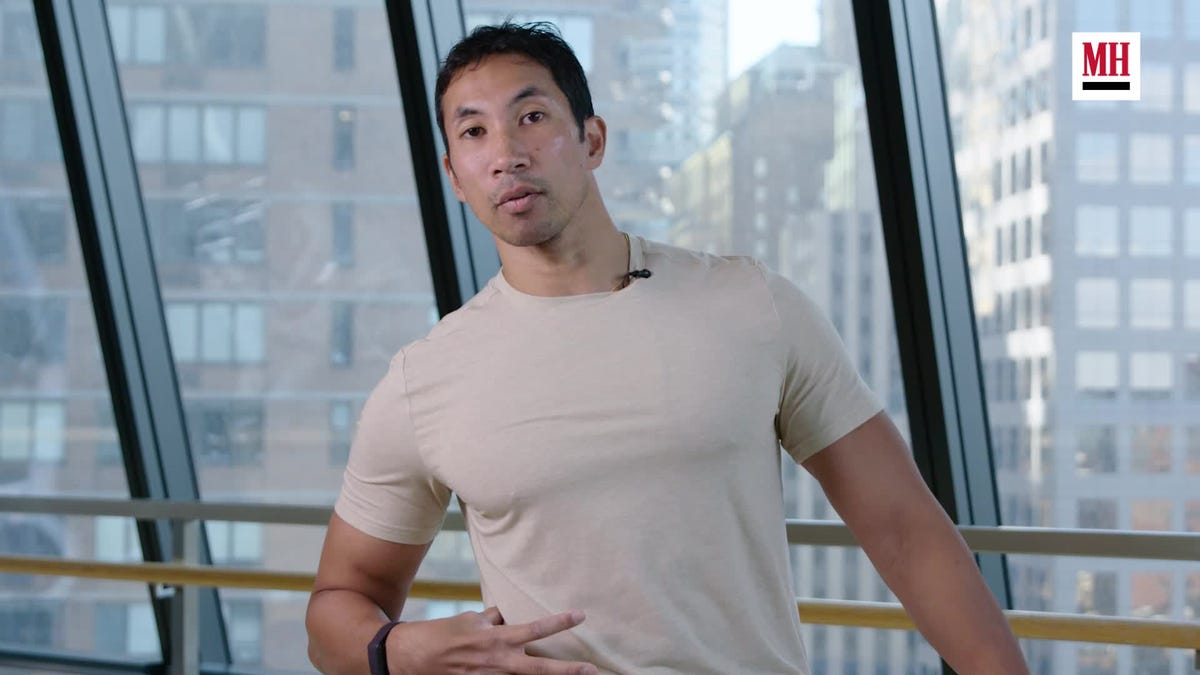
Why: Loaded carries are an underrated core strengthening move as you brace to support the load. This single-arm variation adds an element of anti-rotation, leaning on your obliques to keep your torso upright and balanced.
How to Do It:
Grab a heavy dumbbell in one hand and stand with your feet shoulder-width apart. Hold it with your palm facing your side and the dumbbell hovering a few inches away from your body.Brace your abs like you’re about to be punched in the gut and walk for a prescribed distance.
Sets and reps: 3 sets of 30 seconds per side
Advertisement – Continue Reading Below
Pallof Press
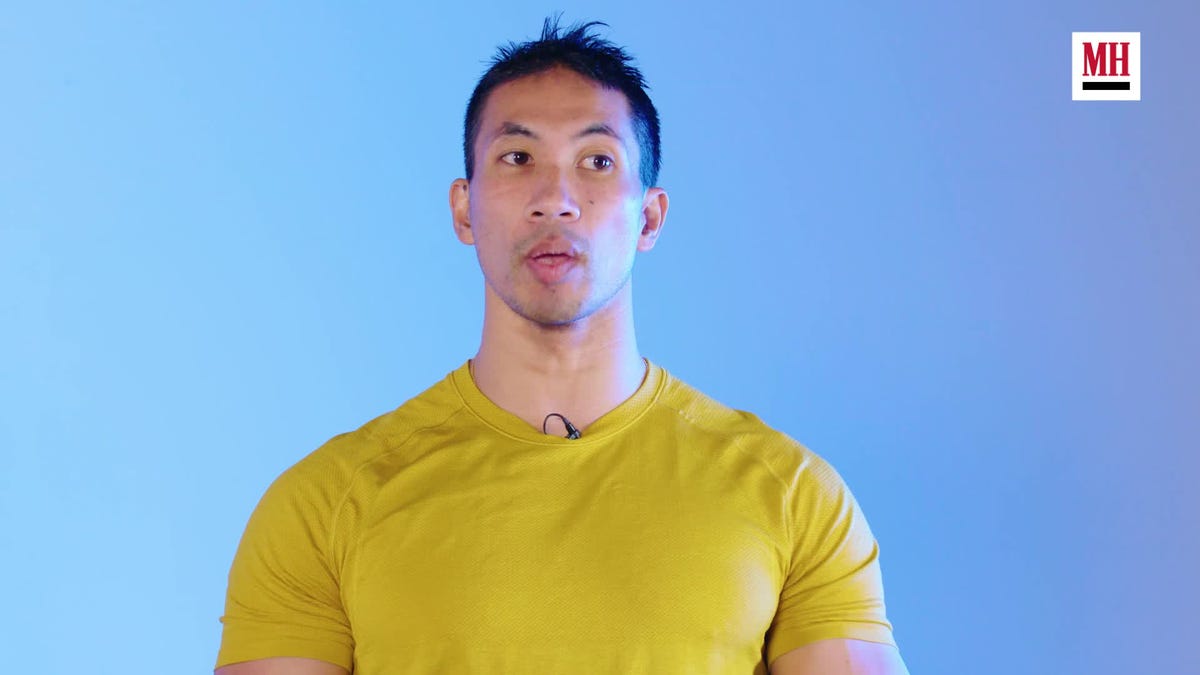
Why: The Pallof press is an anti-rotation exercise, so the key is keeping your torso totally locked-in. Think of this as a full core move that gets the whole unit involved.
How to Do It:
To start, stand or kneel next to a cable machine or a resistance band tethered to a low anchor point. Set up away from that anchor point far enough that there’s tension. Hold the handle of the cable or the band in your hands and brace your core and squeeze your glutes. xtend your arms out, fighting against the rotational force to keep your torso stable. After a count, return to the starting position.
Sets and reps: 3 sets of 8 to 10 reps per side
Kettlebell Windmill
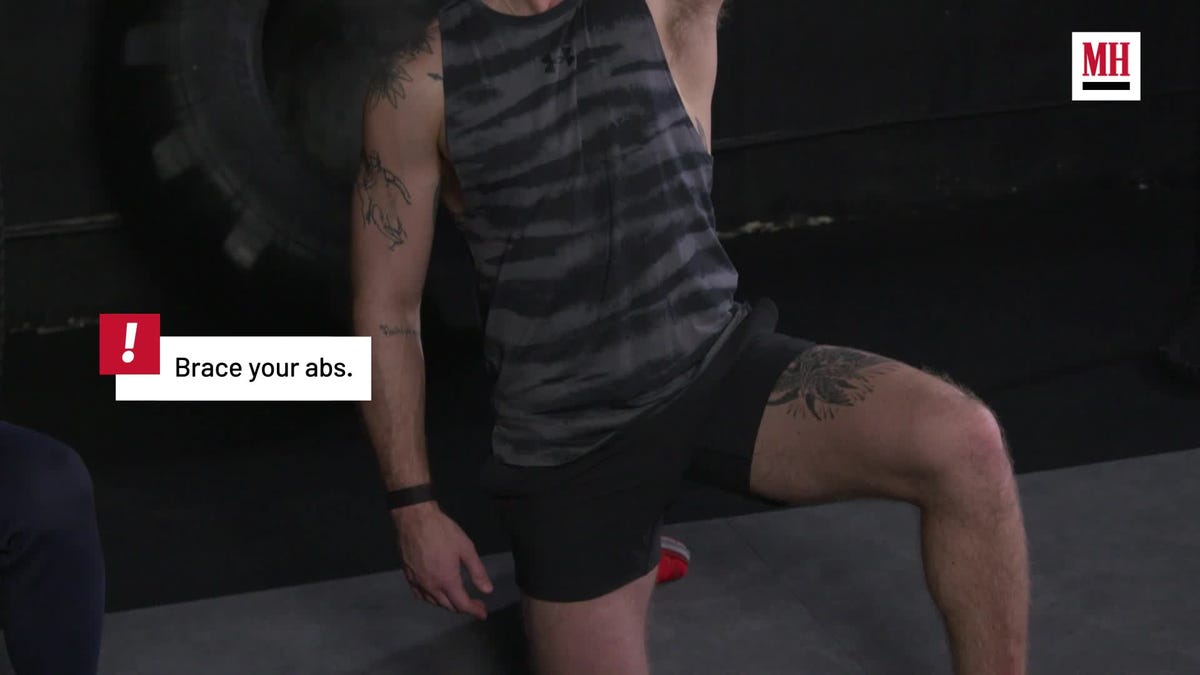
Why: This exercise might not look like much, but it can be very effective for both core training and as a means to promote better shoulder stability and hip mobility.
How to Do It:
Start in a half-kneeling stance, slightly wider than usual. Press the kettlebell straight overhead. Keep your ribcage tight by squeezing your abs and glutes. Look up to the kettlebell, then push your butt back and rotate your chest open as you lower down to the floor. Keep the weight elevated. Reverse the movement to the upright position.
Sets and reps: 3 sets of 6 to 8 reps per side
Russian Twist
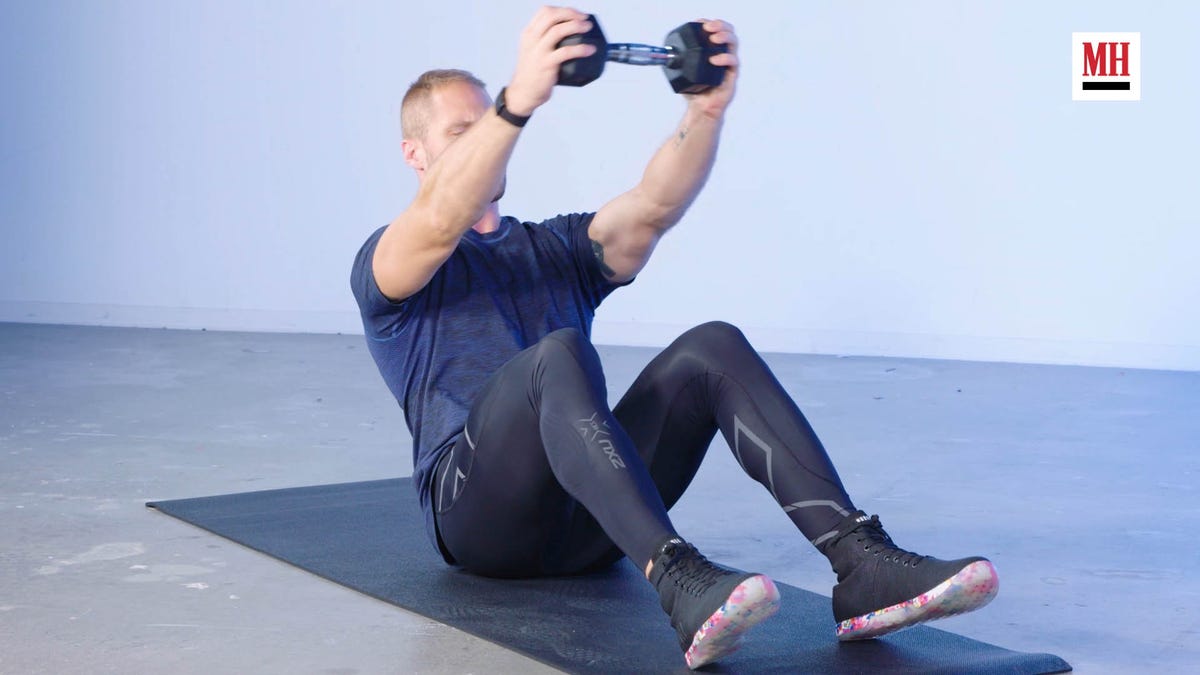
Why: Only add this exercise into your ab training if you’re going to do it the right way. Too many guys rush through reps, which isn’t just ineffective—it could put you at risk of injury, too.
How to Do It:
Sit down on the floor or on a mat, keeping your feet on the ground. Your heels should stay on the floor, but your toes can be off the ground. Squeeze your glutes for stability.Lean back, forming a right angle from your torso relative to your thigh.Raise your arms out in front of you. Look up at your hands (and the weight, once you progress to working with a load)—you’ll keep your gaze trained there throughout the movement.Rotate your torso from one side to the other, pausing for a beat in the middle position between each rep. Move slowly, and keep your eyes on the weight. Keep the load out as far as possible to keep the lever long to challenge your abs. Only work within you range of motion; once your hips and knees begin to shift, you’ve gone too far.
Sets and reps: 3 sets of 15 to 20 reps
Advertisement – Continue Reading Below
Goblet Squat

Why: The goblet squat is a great way for beginners to learn the basics of the squat—but it can also provide a potent challenge for the obliques once you’re working with heavier loads as you engage your core to stay in position.
How to Do It:
Take a comfortable stance and grab your weight, holding it in front of your chest with both hands. Squeeze your shoulder blades to create mid-back tension to help support the load.Before you descend into the squat, take a deep breath and brace your core. This will help you to avoid tipping too far forward.Push your butt back, then bend your knees to squat down as low as you comfortably can while maintaining the proper upright posture. Push your knees out and keep your core engaged; don’t rest your elbows on your knees.Press off the floor with both feet to stand back up, squeezing your glutes and exhaling at the top.
Sets and reps: 3 sets of 6 to 8 reps
Bear Plank Chest Press
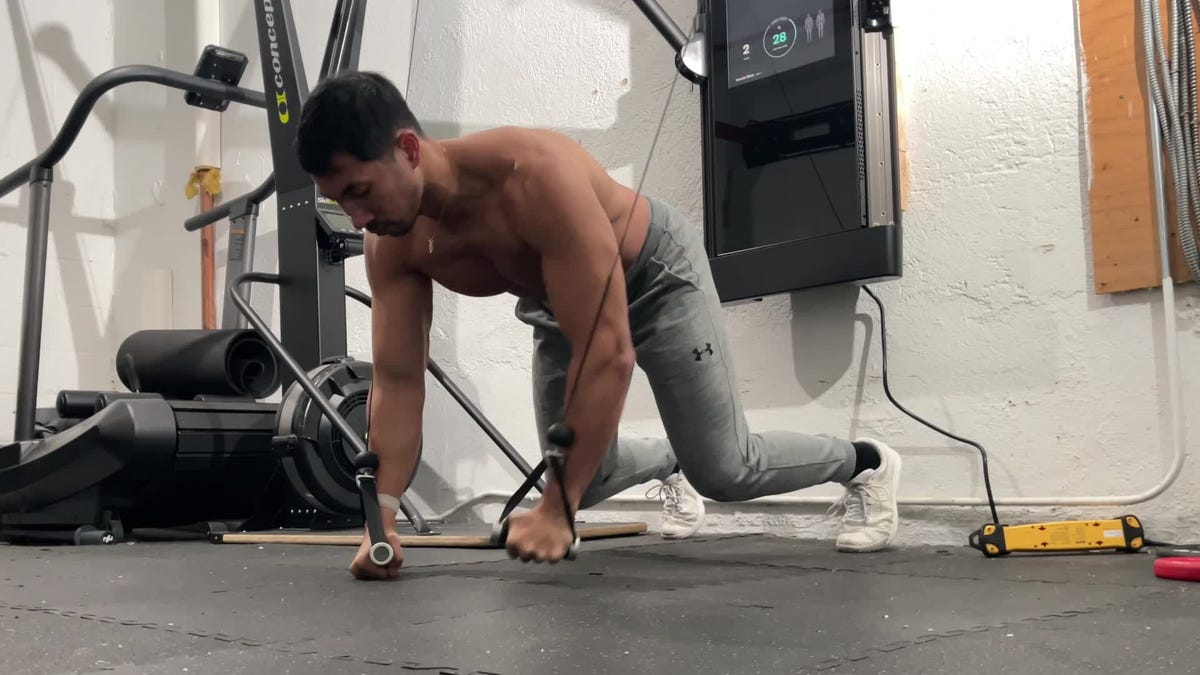
Why: This tweak to the classic cable fly puts your obliques on notice as you battle to keep your hips square to the ground while the resistance pulls you upwards. It’s a solid chest-day finisher that blasts your abs too.
How to Do It:
Set up in a cable machine, holding the handles in a bear plank position. Perform alternating pressing reps with either arm. Squeeze your abs and glutes to keep your hips and shoulders square.
Sets and reps: 3 sets of 8 to 10 reps per arm
Bird Dog
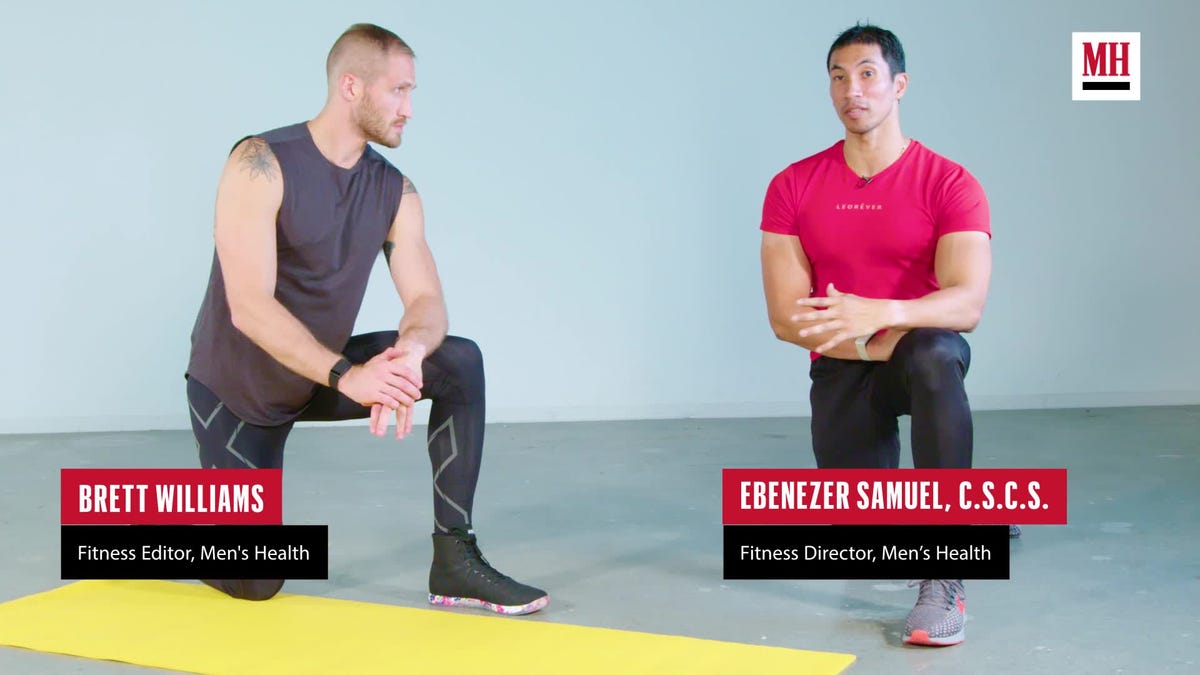
Why: This classic stabilization exercise challenges your obliques. Emphasize the squeeze at the top of each reach, and you’ll feel it.
How to Do It:
Get into a tabletop position with your hands directly under your shoulders and your knees directly under your hips. Simultaneously lift your left arm and right leg. Pause for 5 to 10 seconds before lowering. Repeat on the other side.
If you want to make it harder, elevate your knees so they hover just a few inches off of the floor.
Sets and reps: 3 rounds of 8 to 10 reps per side
Advertisement – Continue Reading Below
Mountain Climber

Why: The mountain climber isn’t just an ab movement—it’s an opportunity to hone your running ability. Shift the focus even more directly to your obliques by crossing your knee to your opposite elbow.
How to Do It:
Set up in a high plank (pushup) position, with your hands stacked directly below your shoulders, elbows turned out, and feet just wider than hip-width apart. Your shoulders should be higher than your hips. Think of this as an athletic position.Squeeze your shoulders, core, and glutes to create full-body tension. Look down at the floor, keeping your head in a neutral position.Drive one knee up high to your chest, as if you were running. Return your leg to a straight position. Repeat with the other leg.Continue alternating reps, working to keep your torso in position with your shoulders higher than your hips. Brace your core to stay level.
Sets and reps: 20 seconds on, 10 seconds off for 6 minutes
Spider-Man Pushup
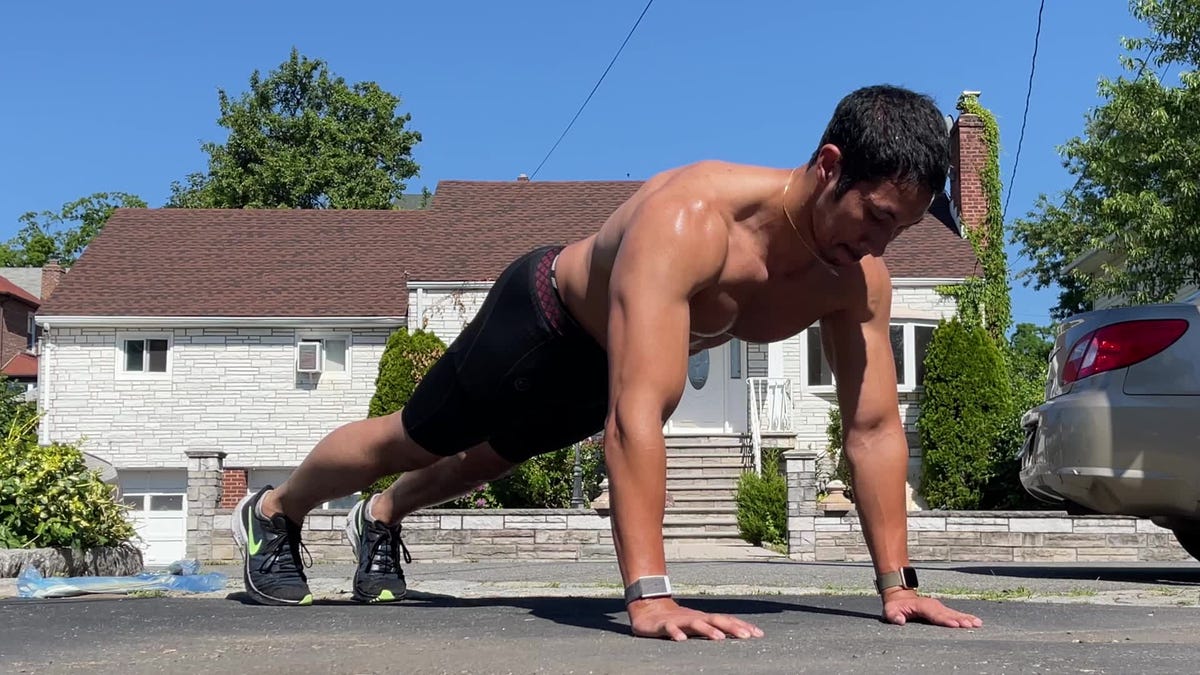
Why: Channel a superhero and add even more of a core component with this pushup variation.
How to Do It:
Assume a standard pushup position. As you lower your body toward the floor, lift your right foot off of the floor, swing your leg out sideways and try to touch your knee to your elbow.Reverse the movement as you push your body back to the starting position.
Sets and reps: 3 sets of 8 to 10 reps per side
Half-Bench Single-Arm Press
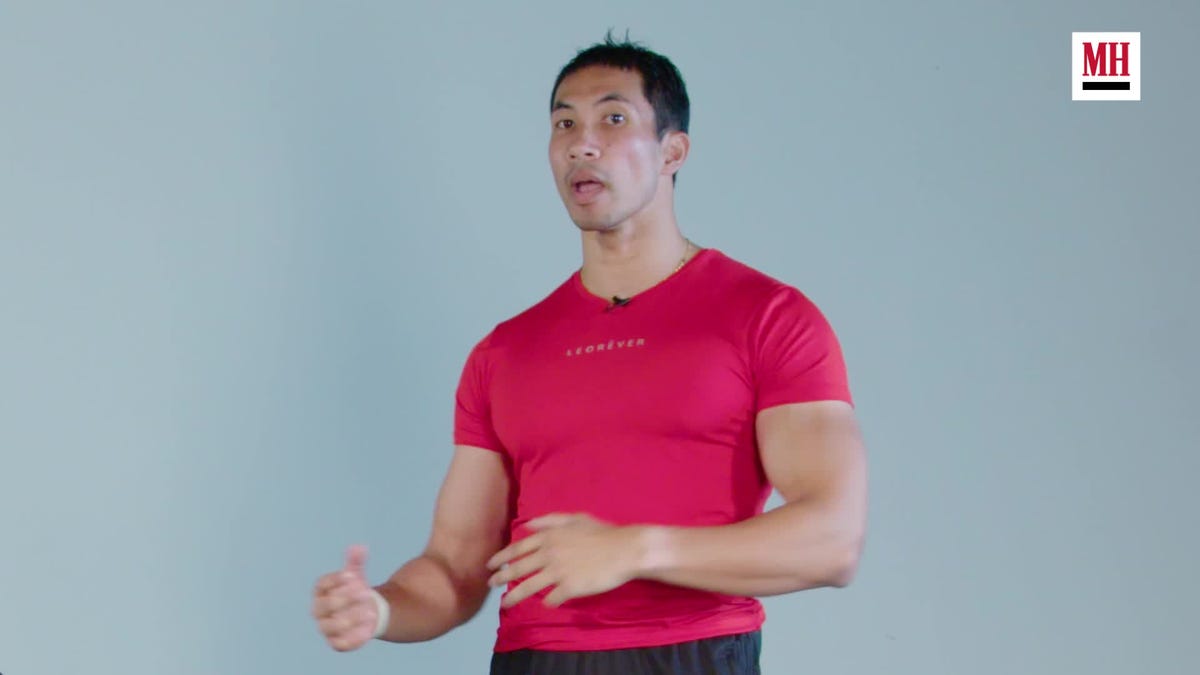
Why: This seems like a chest exercise, but it’s more than that: By pushing half your torso off the bench, your obliques and abs essentially must serve as an extension of the surface, tightening and bracing to give you a platform from which to press. That’s a ton of anti-rotation work and oblique stress on every single rep.
How to Do It:
Position yourself on the bench holding a single dumbbell. Drive the weight up and hold it in position.Slide the working side of your body off the bench, so half your body (shoulder, spine, glute) is no longer supported by the back pad. Squeeze your glutes and abs to keep yourself from tipping over off the bench. Continue maintaining tension throughout the exercise.Lower the weight down to your chest, the press up for reps.
Sets and reps: 3 sets of 10 to 12 reps per side
Advertisement – Continue Reading Below
Ab Wheel Rollout
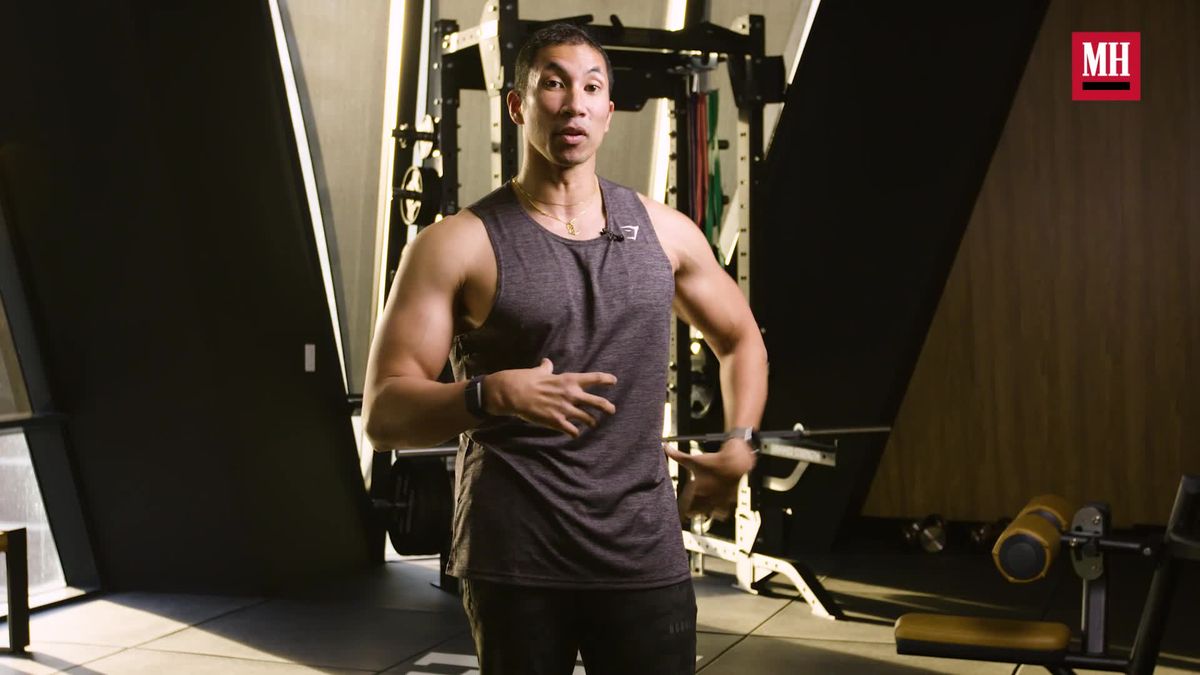
Why: The ab wheel is a useful tool found in most gyms that gives you the opportunity to work an underappreciated function of your core: anti-extension. This is more than just a gimmick and while it’s especially effective for the rectus abdominis, it hits your whole core (including the obliques).
How to Do It:
Sit on a yoga pad with a wide stance holding the ab wheel with both hands. Keep your head in a neutral position, looking at the ground directly in front of you. Squeeze your shoulder blades, abs, and glutes to create tension.Turn the pits of your elbows forward to activate your lats and putting your shoulders into external rotation.Round your back, then press into the floor to roll out as far as you can. Keep your back rounded and avoid any arch.Pause for a brief count in the fully extended position and squeeze your abs.Round your back to begin rolling the wheel back slowly. Make sure the wheel is moving before you shift your hips back.
Sets and reps: 3 sets of 6 to 10 reps
Hanging Leg Raise
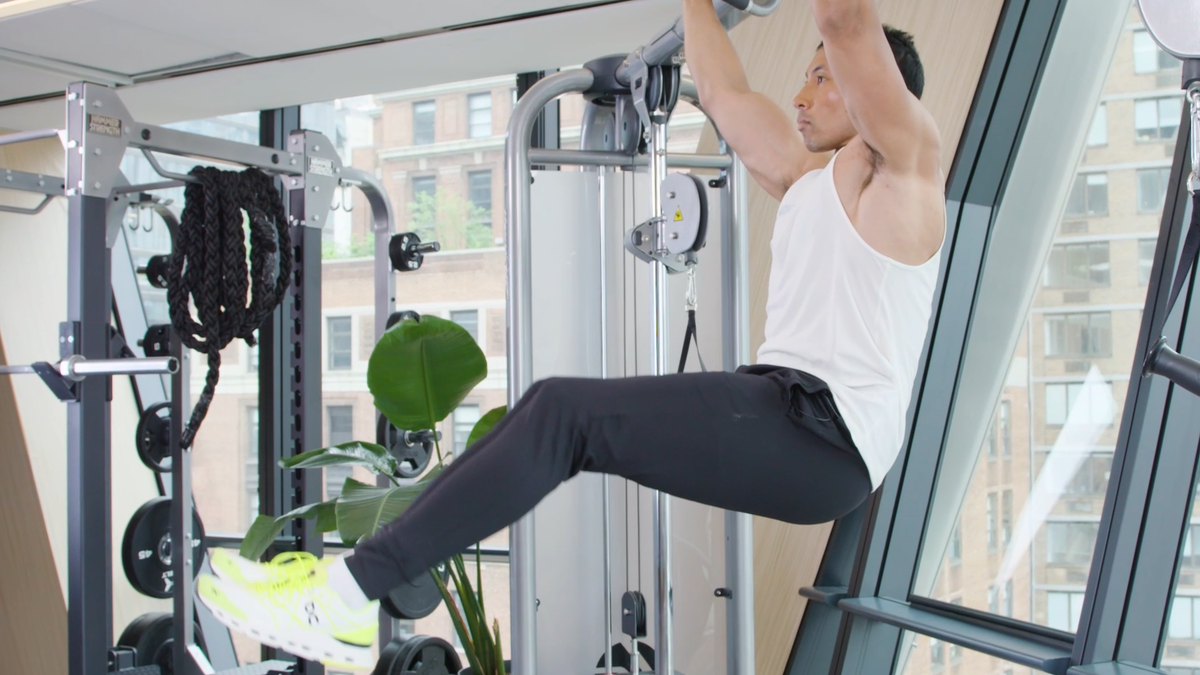
Why: This tough hip flexion movement challenges you to work a different way than you would doing situps or crunches. This isn’t only working your obliques—but your whole core will have to work together to do these reps right.
How to Do It:
Grab the bar with a strong overhand grip.Squeeze your shoulder blades, abs, and glutes to create full-body tension. Your feet should extend out just in front of your torso. Bend your knees slightly, then curl your legs up. Your butt should show to anyone standing in front of you. Reverse the movement to the same position you started.
Sets and reps: 3 sets of 8 to 12 reps
Typewriter Hanging Leg Raise
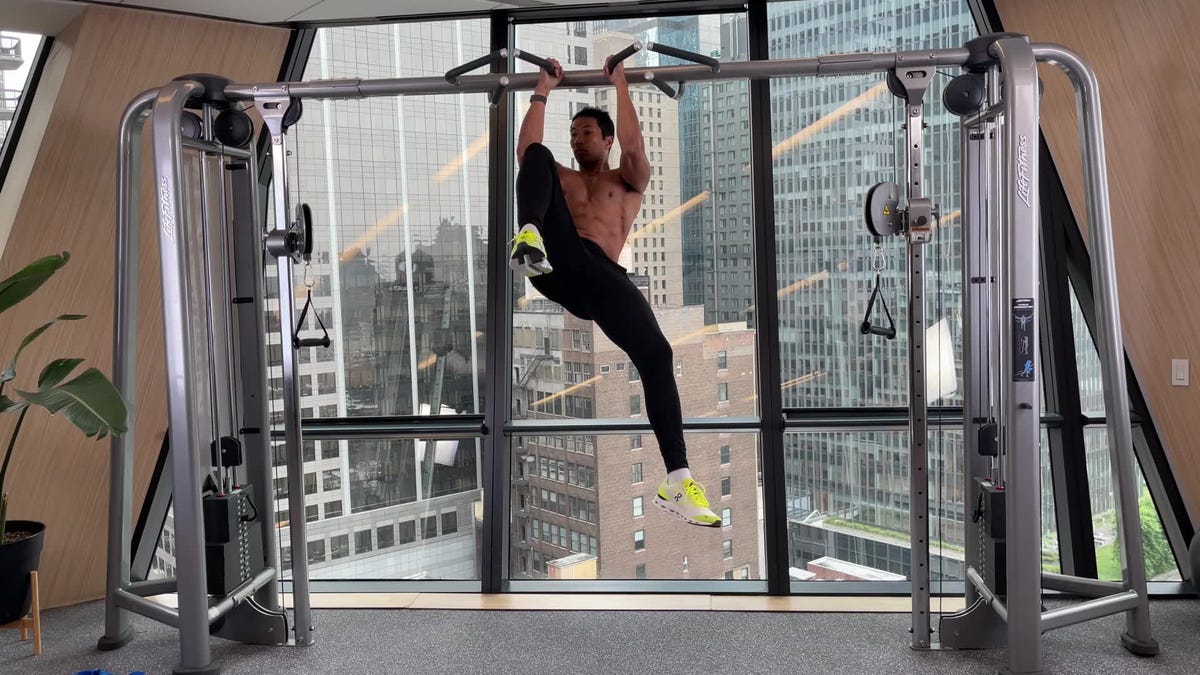
Why: As if the hanging leg raise wasn’t difficult enough, you’ll add a new element that gives your obliques and even tougher task.
How to Do It:
Hang from a bar. Tighten your abs, shifting your pelvis slightly in front of you. Squeeze your shoulder blades and flex your biceps slightly.Keeping your left leg as straight as possible, bend your right leg. Tighten your abs and pull your right knee to touch your left elbow.Pause and squeeze.Swing your right knee across to touch your right elbow, then back to touch your left elbow.Lower back to the start without letting your legs reach back or arching your back.That’s 1 rep. Repeat on the other side.
Sets and reps: 3 sets of 6 to 8 reps per side
>>> Read full article>>>
Copyright for syndicated content belongs to the linked Source : Men’s Health – https://www.menshealth.com/fitness/g19545807/best-oblique-exercises/































